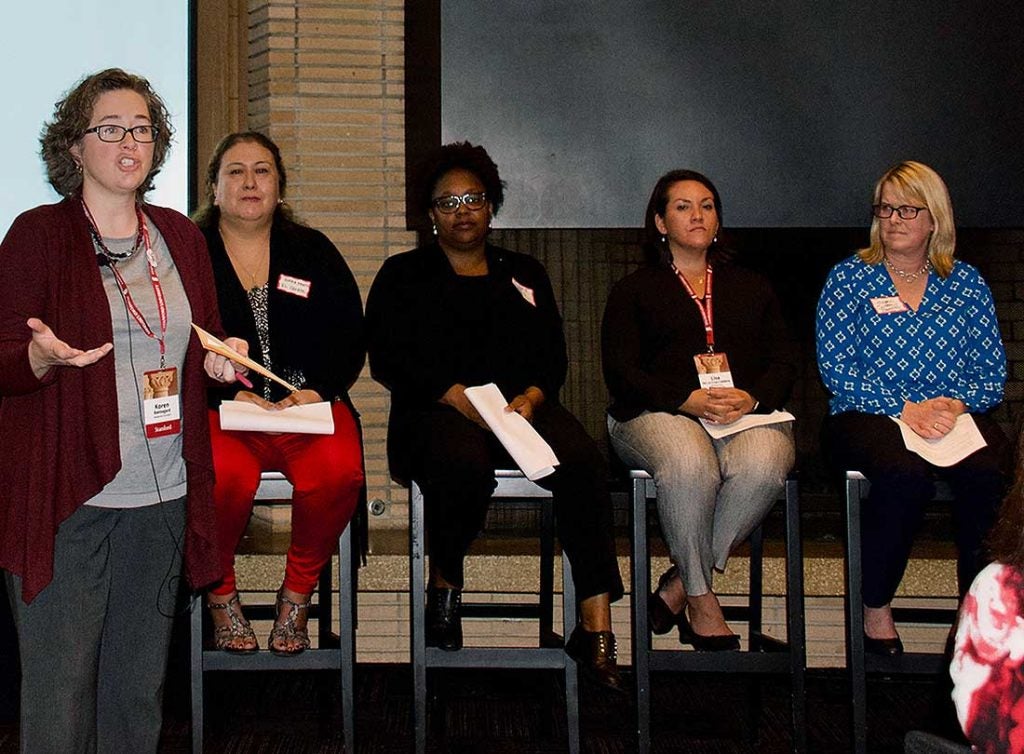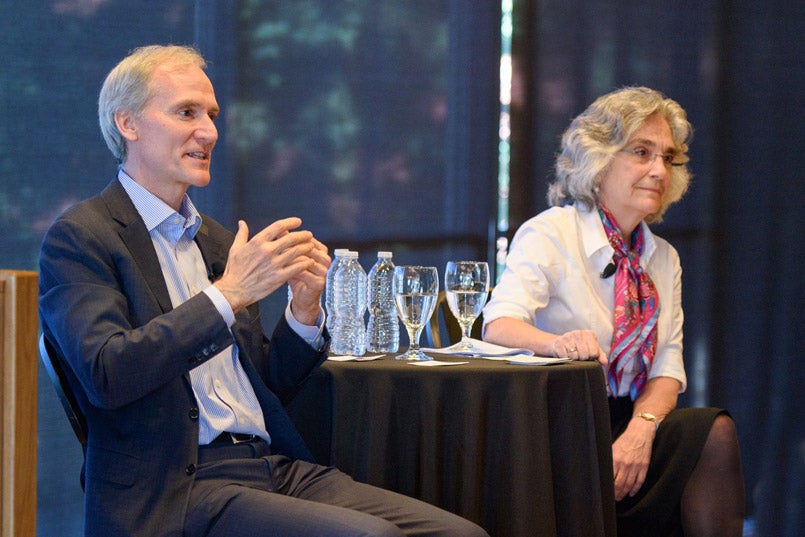November 1, 2017
Our work in Student Affairs
It is such an honor to be the leader of the Student Affairs division. During my first month as vice provost, I have developed a deep appreciation for how our staff contribute meaningfully to our shared purpose, which is ensuring that all of our students thrive and succeed.
Student Affairs is a diverse division with more than 25 offices and centers spread out across the four corners of campus. We are responsible for providing our undergraduate and graduate students with a broad range of services, support and transformative experiences through leadership development, career exploration, residential programs, service learning opportunities and health and wellness offerings.

About once a month Student Affairs’ approximately 300 staff members come together to explore ways we can better serve our students. The title of our October meeting was “Compelling Challenges in Student Affairs.” The discussion was focused on four main themes:
- Enhance the Academic Enterprise;
- Promote Inclusion and Equity;
- Empower Students to Thrive;
- Foster Community Engagement.
We asked four Student Affairs colleagues to share stories related to one of each of these themes. The stories they shared and the discussions they inspired provide a window into how Student Affairs approaches its work in these critical areas.
Enhance the Academic Enterprise
Megan Swezey Fogarty, deputy executive director of the Haas Center for Public Service, talked about the challenges and opportunities Haas faces as it works to ensure that public service is regarded as a university-wide initiative and a distinctive feature of a Stanford education.
She noted that public service has come a long way since she was a Stanford undergraduate, when very few academic courses had a community or service- learning component. And because she had to work summer jobs to earn money toward her tuition, she could not take advantage of the internships in Washington, D.C. that some of her classmates were able to participate in.
Since then, however, the Haas Center and campus partners have collaborated to ensure that local, national and international service opportunities are affordable for all students.
Swezey Fogarty noted that the 2012 report on the Study of Undergraduate Education at Stanford (SUES) called for students to have more real-world experiences. Stanford’s 125th anniversary provided the university with an opportunity to champion its fundamental values of service. As the Haas Center celebrated 30 years and took stock of its goals, it became clear that public service work was already taking place across the university.
“We wanted to weave opportunities together for students and be more than the sum of our parts,” Swezey Fogarty said, adding that doing so has required focus and an investment from faculty and the university’s senior leadership. And the work continues to evolve. “When you excite campus partners, you have to invest in what that generates,” she said.
Promote Inclusion and Equity
Lisa De La Cruz-Caldera, a lead residence dean in Residential Education, described citizenship status as “one of many complex student identities that may not be visible to others.” In her doctoral research, De La Cruz-Caldera found that undocumented students often perceive systems within their institutions to be unsafe and risky. However, having allies can make a world of difference. She urged her colleagues to engage in what she called “deep knowing.”
De La Cruz-Caldera recounted the story of a student she referred to by the pseudonym “Rigo,” who attended a college orientation in which the institution featured a tent highlighting resources for undocumented students. The experience gave Rigo “agency to reveal his citizenship status.” For the first time, “Rigo found a place where he could easily fit in with an identity he had never before disclosed in a college context.”
De La Cruz-Caldera went on to say, “We need to continue to hold ourselves to the highest standard of knowing our students deeply and to apply what we know to what we do, with the goal of engineering both systems and spaces on this campus that can signal a sense of belonging, especially for those students with identities not visible to us.”
Empower Students to Thrive
Sonya Forrester, assistant dean of students in the Graduate Life Office, talked about the challenge of responding to students with families. She noted that these students have complex needs that extend beyond structures and resources built for individual student support.
“Students with children face many challenges. In addition to the stress of fitting childcare and family life into an already full academic workload, they also have to deal with the financial strain of supporting a family on the same graduate stipend as a single student,” Forrester said, adding that the cost of childcare contributes significantly to that financial burden.
Forrester appealed to her colleagues in Student Affairs to “join the Graduate Life Office in thinking through these challenges and expand the network of support and resources for our graduate student families with children.”
Foster Community Engagement
Elvira Prieto, associate director of El Centro Chicano y Latino, shared examples of the innovative and transformational work done at El Centro and other campus community centers. She noted that Stanford’s Latinx community is increasingly diverse, encompassing multiple and intersectional identities.
“Some of our students identify as Latinx and Queer, or Latinx and Jewish, or Latinx and African American, some identify as all of these, and most are first-generation and low-income. Our commitment to honoring the diversity of our racial, cultural, ethnic and intersectional identities informs the way we build and develop community, with an openness to learning and growing from difference that is at core of our mission. This in turn allows everyone who comes to El Centro to be present in their wholeness and without having to leave any part of themselves behind, which, unfortunately, is not a common experience for our students in most other spaces on campus.”
Prieto also pointed out that one-third of the students who participate in El Centro’s programs and events are those who identify as “non-Latinx and come from every other identity and experience represented at Stanford.”
Yet, too often, she said, the center is narrowly perceived as a place for “food and fiesta” and self-segregation.
“These perceptions could not be further from the truth. So, I ask you today, to help us think about how, in a time in which our community and our center are overwhelmed and overburdened in an extremely divisive and destructive national climate, we ensure that others understand our value, our contributions, and actively commit to supporting our collective endeavors.”
Our Continued Work
Following the presentations, Student Affairs staff huddled at their tables discussing the themes that resonated with them and ways in which we can collectively work with our colleagues to address some of the challenges presented. The stories generated a tremendously rich and inspiring group of conversations and a wonderful collection of ideas. I plan to work with my executive team to make sure we are hearing all the voices that came forward during this important discussion.
Moreover, no one spoke about this as a single endpoint we need to reach. I heard over and over again expressions about our work as an ongoing, shared process of learning and adapting to changing circumstances.
